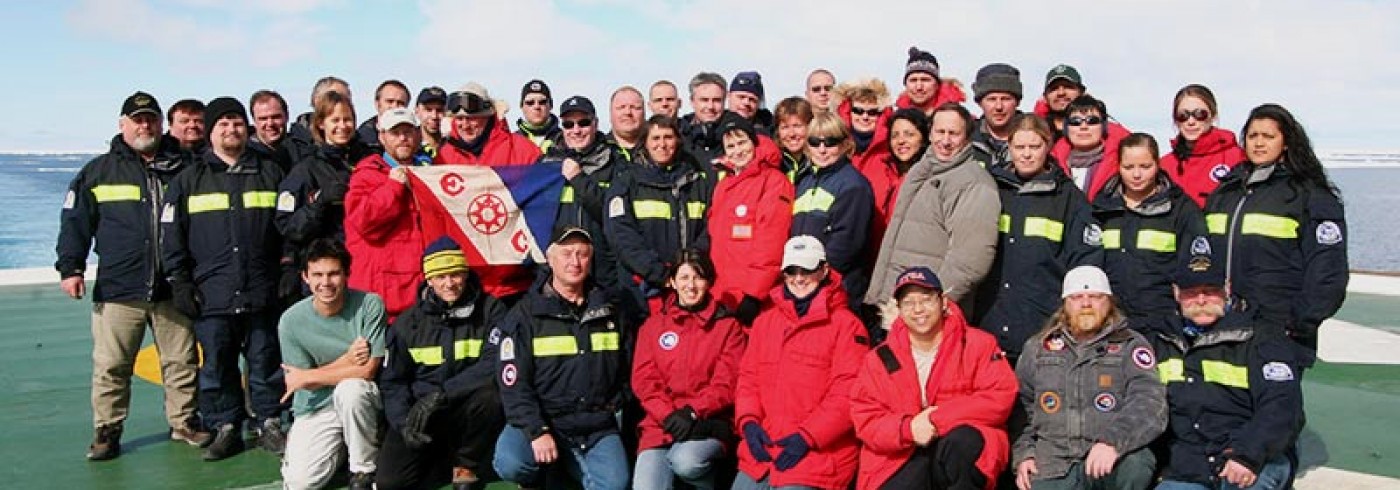SOLO float studies of depth-structured temperature and salinity profiles in the Southern Ocean
12 December 2006 - 27 December 2006The aim of this project was to deploy six SOLO floats at two locations: near 60°S latitude, and close to the ice edge near 150°W longitude as the Oden transits from South America to McMurdo Station. These floats measure temperature and salinity at particular depths. They record profiles of seawater temperature and salinity to approximately 1800 dbars (or 1800 m) every 10 days. Once the float is deployed, it immediately descends to its maximum depth, takes a profile, ascends to the surface and then transmits the data using satellite communications. After sending the data back the first time, the float descends again to about 1 000 m, drifts for about nine days, descends to 1 800 m and records a profile as it ascends to the surface and transmits the data to orbiting satellites. Each float will repeat this latter cycle until the batteries expire after about four to five years. The first three floats deployed (at 59, 60 and 61°S) transmitted data via the Service Argos Data Collection and Location System (DCLS) while at the sea surface for about eight hours. The second set of three floats used the Global Positioning System (GPS) constellation of satellites to calculate geographic location of the float when at the surface and the Iridium satellite system to transmit data back to users. The data is processed within a few hours after it is received and then transferred to the GTS data system that distributes the meteorological and oceanographic data to all weather and climate prediction centres around the world. The data are also sent to the Argo Global Data Acquisition Centres (GDACs).
The last (5th of 6; the 2nd SOLO failed before deployment) of the SOLO floats was deployed on 22 December

